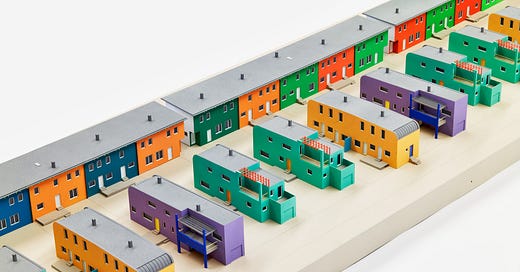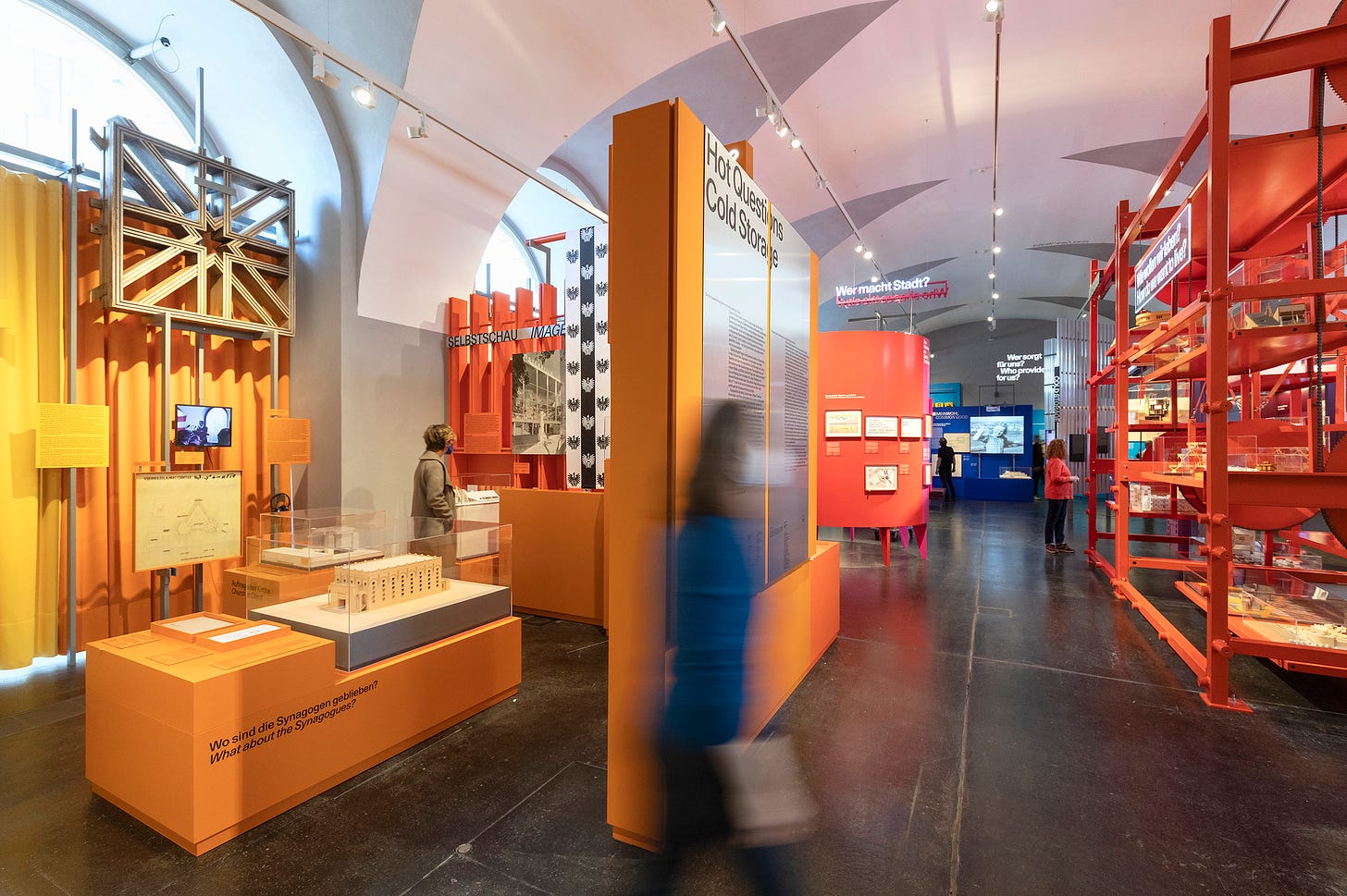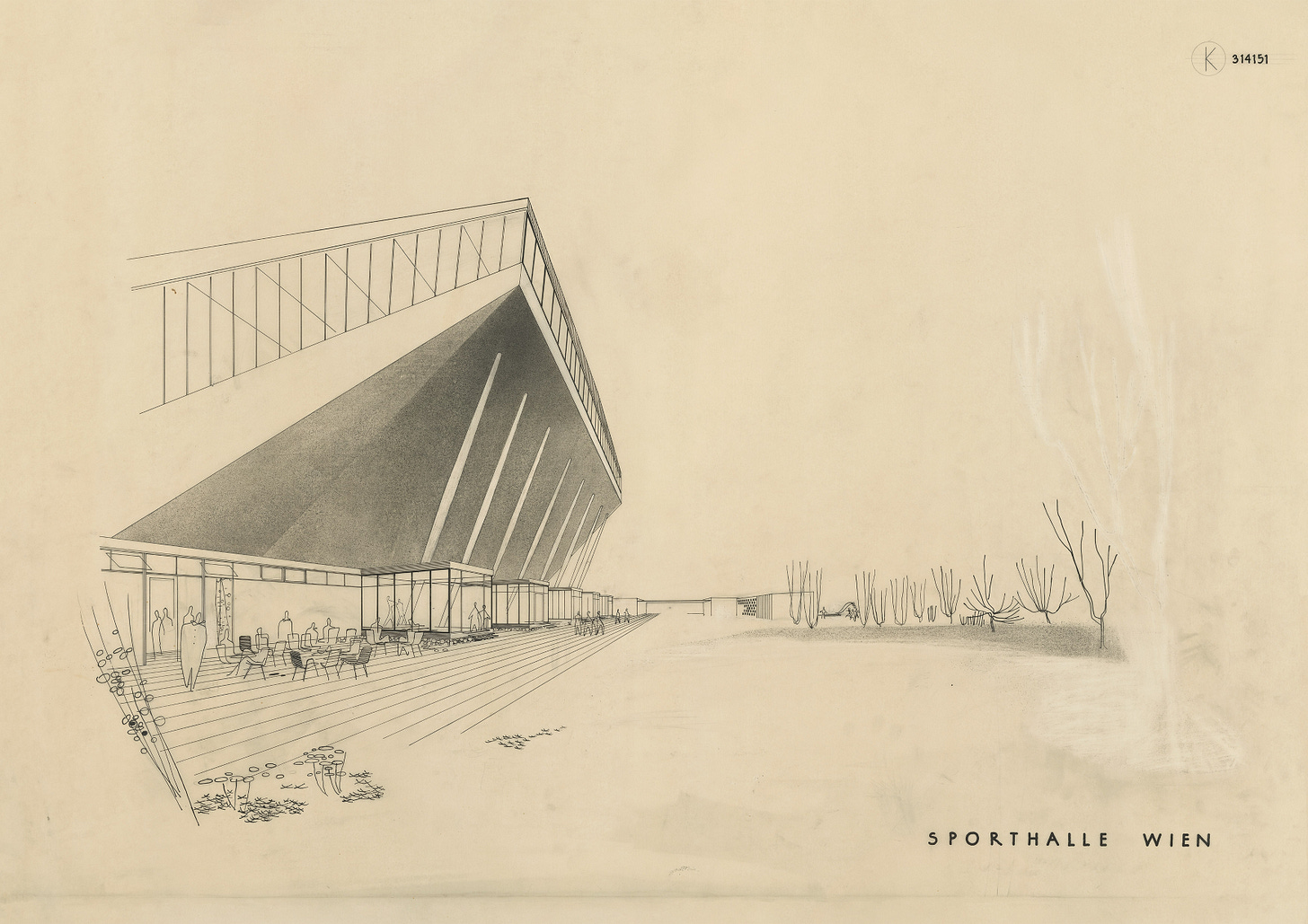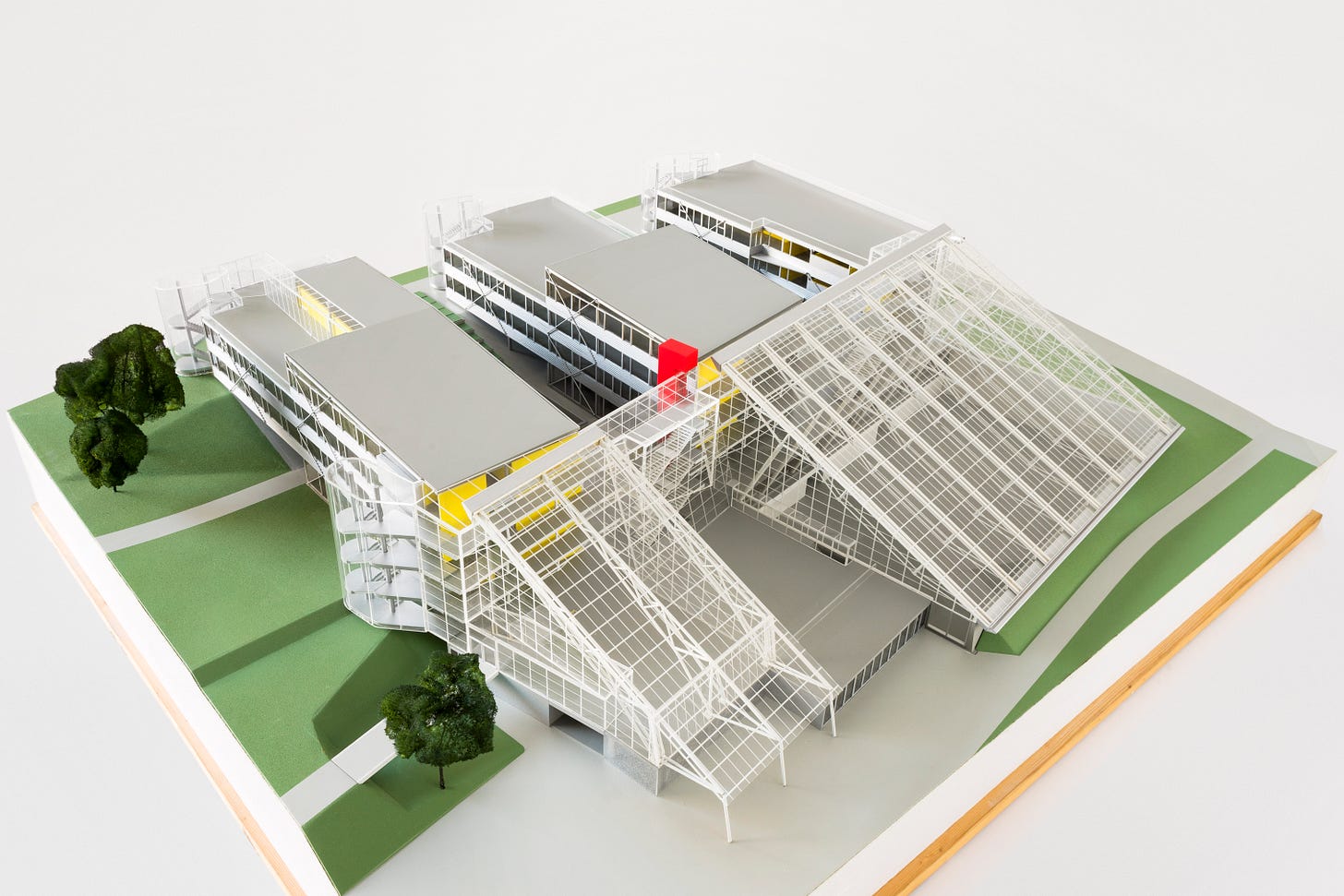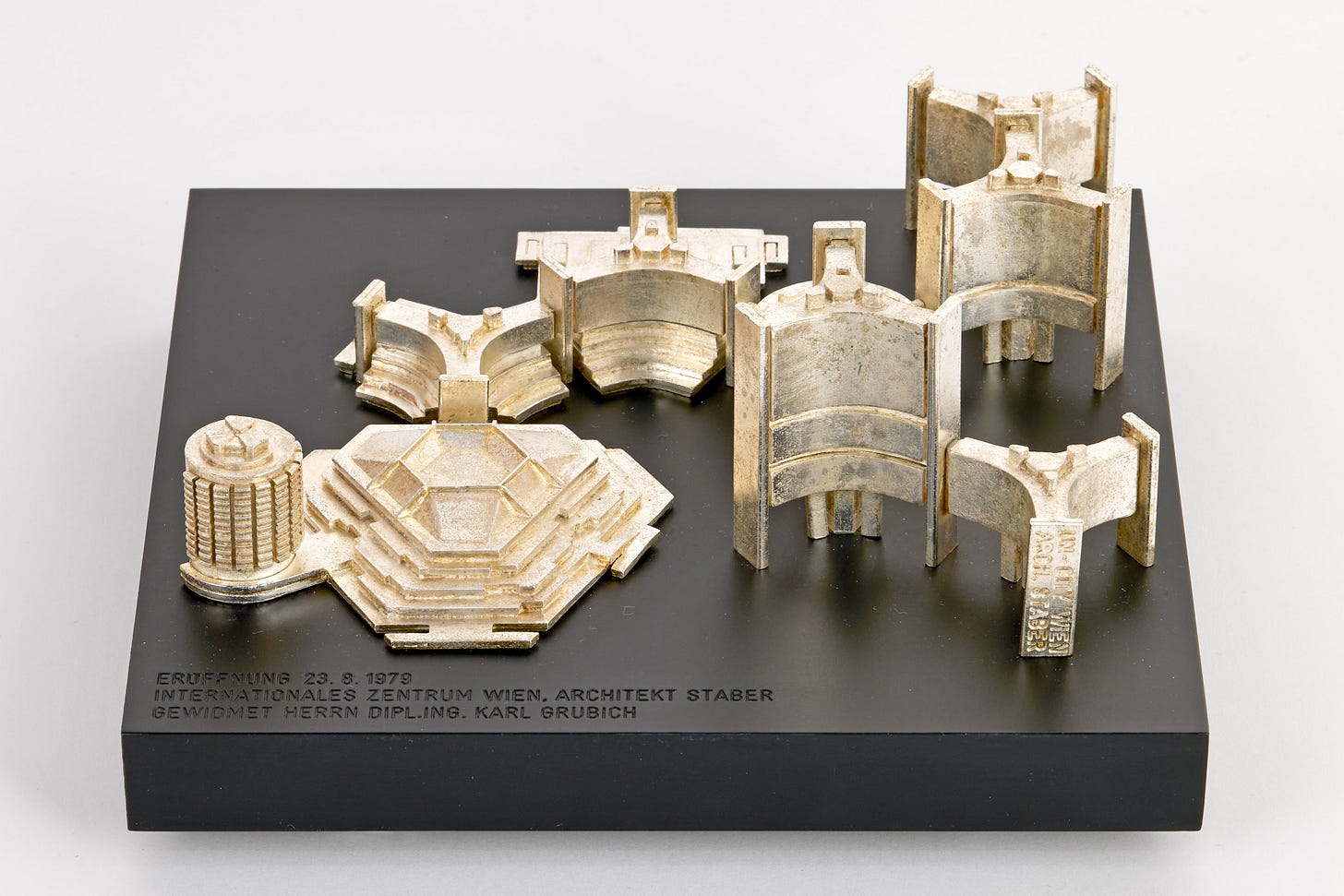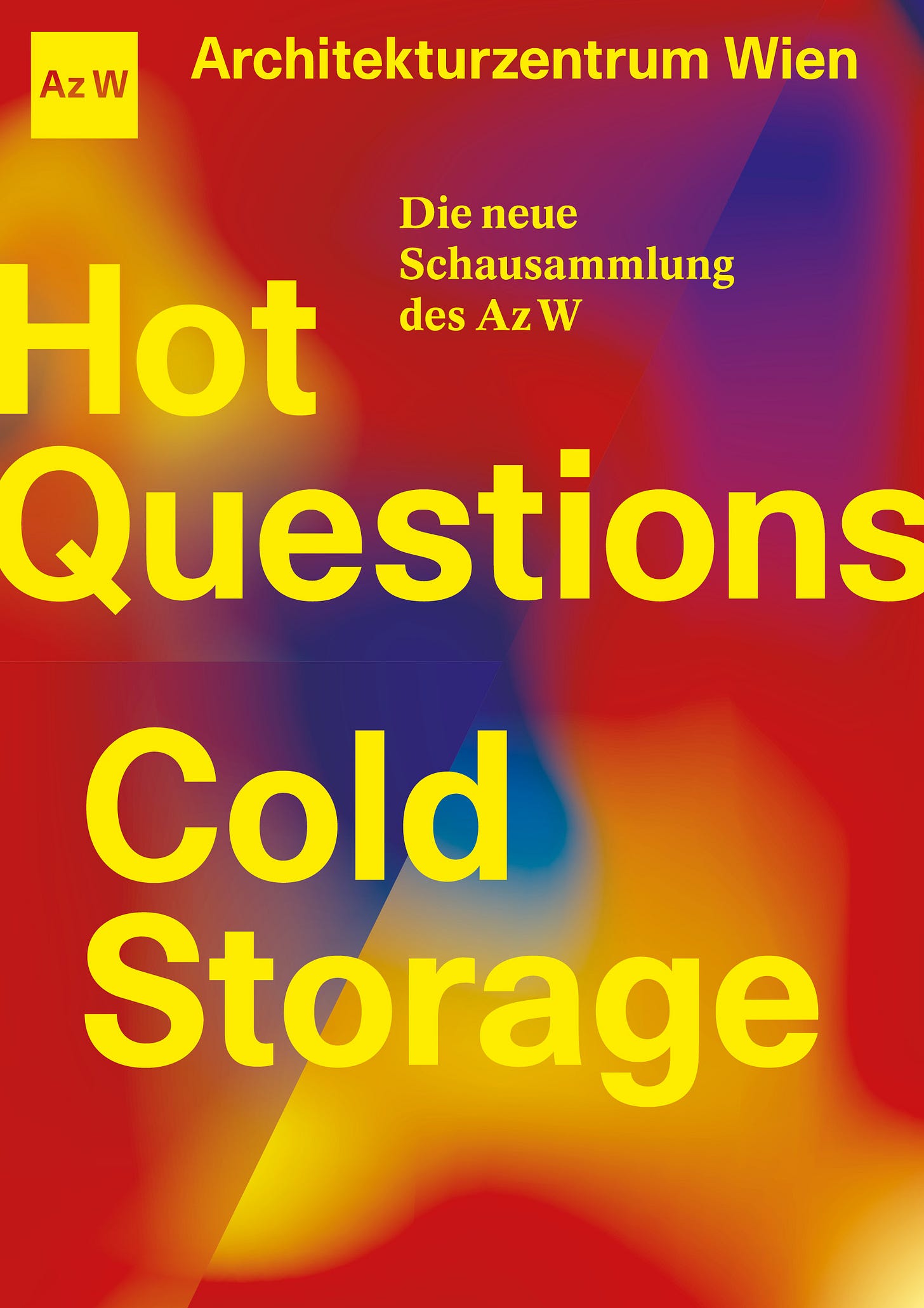Hot Questions – Cold Storage
The new permanent exhibition at Vienna's Architekturzentrum conceives of architecture as central to Austrian-ness, asking us who we are and where we're going
Servus!
Austria’s only museum dedicated to architecture, the Architekturzentrum Wien—located in the Museumsquartier, its home since 2001—has a new core exhibition. Its previous one, “a_show”—an overview of Austrian architecture in the twentieth and twenty-first centuries arranged chronologically—was put in place in 2004: a perfectly fine exhibit, but one whose display objects were reproductions. Over the past two decades, the Architekturzentrum Wien’s collection of architects’ archival and project-related materials has grown, enabling it to reconceive and reconceptualize its permanent exhibition.
That new exhibit, “Hot Questions – Cold Storage,” organizes these objects, the ‘cold storage,’ thematically around seven ‘hot questions.’ The exhibit poses to the visitor the following: Who shapes the city? How do we want to live? Who provides for us? Who are we? Who gets involved? How is architecture produced? How can we survive? The interplay of these rhetorical questions with the display objects results in a more engaging and challenging permanent exhibition than the one that preceded it. It conceives of architecture as central to Austrian life and Austrian-ness. In “Hot Questions – Cold Storage,” architecture is a mirror, showing us who we are and where we are going.
Twentieth-century Austria, like much of twentieth-century Europe, was dominated and shaped by utopian and dystopian ideologies. “The aim of the Architekturzentrum Wien is to show and ask: What can architecture accomplish?” the museum states, and in Red Vienna, for example, architecture was seen as a tool for reshaping and improving the human condition. Nowhere is that more obvious than in the city’s program for social housing construction, one which in the years between the wars lifted hundreds of thousands of residents out of homelessness or slum conditions and into modern, Art Deco housing developments that contained a mix of single-use, communal, and green space.
Thank you for subscribing to the Vienna Briefing. If you know someone who might be interested in reading this newsletter, consider sharing it with them today.
Architecture made solid the aspirations of Red Vienna both before and after the War. The Stadt des Kindes was a home for vulnerable children and young people which opened in 1974. The large complex was designed as a kind of “city within a city” that would prepare children for their future lives. Accommodation, education, shopping, and leisure facilities such as an indoor swimming pool, gymnasium, theater, and ceramics workshop were all contained within. It was a utopian idea which by the 1990s had fallen out of fashion, replaced by an individualized, decentralized approach to caring for vulnerable kids in the community. The Stadt des Kindes closed in 2002 and was left to go to seed; the Architekturzentrum Wien was able to save a number of its interior fixtures which have now found a permanent home in “Hot Questions – Cold Storage.”
Architecture was also used to project Austrian power. The Vienna International Center, also known as UNO City, was perhaps the prestige project for the Austrian government in the 1970s. When an international competition to select an architect for the United Nations’ new home in Vienna was held in 1969, first, second, and third place went to Chilean, English, and German architects respectively. The Austrian designer Johann Staber came in fourth, but it was he who was chosen by the Kreisky government a year later to take on the project, bequeathing Vienna an enormous complex of six Y-shaped towers out of which the asbestos had to be stripped in the early 2000s.
Moving into the twenty-first century, the hot question is the final one in the above list: How can we survive? Construction is necessary and unavoidable, but it is also a drain on our collective resources and one of the biggest contributors to climate change. The question of how we survive is also closely related to another: How do we want to live? The state still drives construction, but increasingly citizens are asking themselves: What kind of apartment buildings do we want to live in? how do we want to live both individually and as a community? and how can be make that vision a reality in a sustainable, low-carbon way? The cities of the future, including Vienna, will be shaped not only from the top down but the bottom up.
“Hot Questions – Cold Storage” runs forthwith at the Architekturzentrum Wien.
Bis bald!

